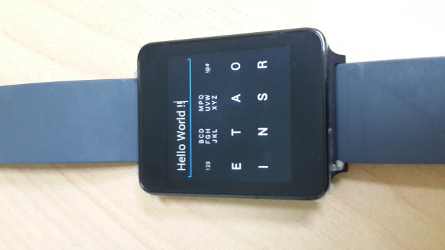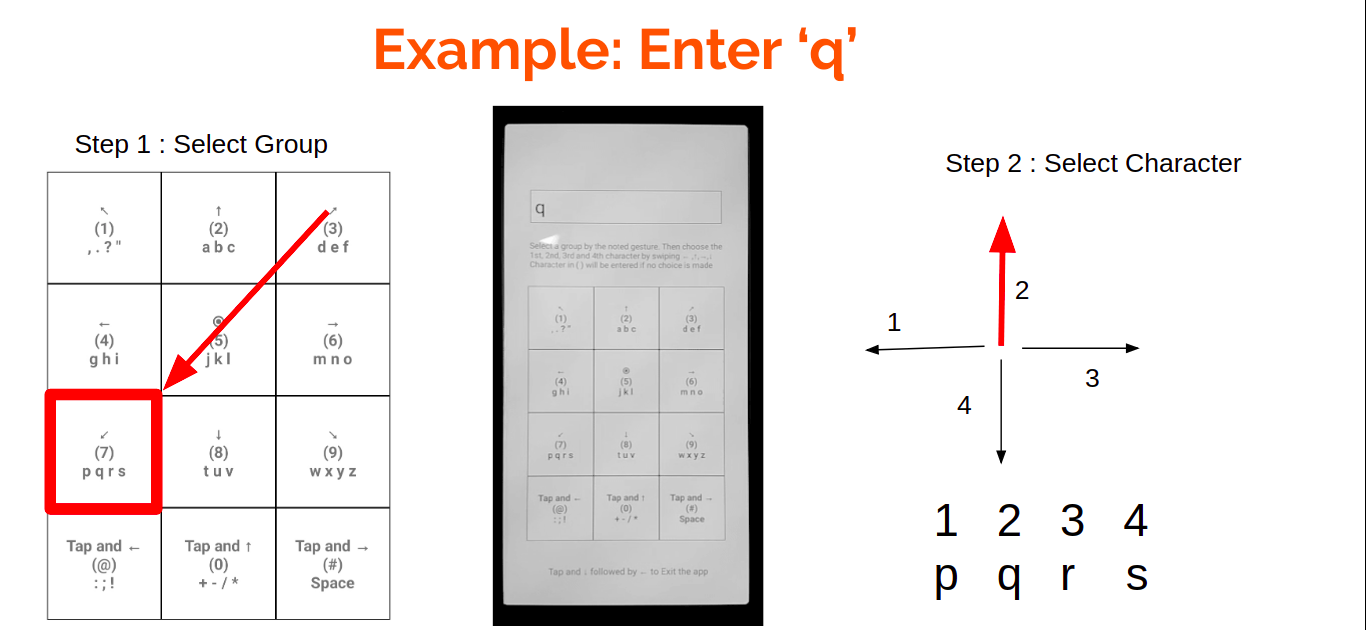TEXT ENTRY SYSTEMS

Language is a method with which we can share our idea. In our world, we have as many as 6909 living languages spread over 196 countries. India being the second highest population (1.311 billion (2015), after China as the first 1.371 billion (2015)) follows 1652 languages for their communication. It is indeed a challenging task to develop a system to serve each community. It may be noted that each language has its own characteristics and hence needs a special attention from researchers to process the languages. Text entry is one such processing. Text entry is usually accomplished by means an efficient interface. There are three perspectives so far an interface is concerned — language, people, and device. It is unlikely that same interface is effective for all languages. Different interface is required to cater to the needs of different people (literate/illiterate, novice/experienced, able-bodied/disable, and so on). Finally, interface should vary from one device to another (large display devices to small hand-held devices). In a nutshell, developing an interface satisfying three degrees of freedom is a challenging task. In this direction, our research endeavour is furnished in the following.
Keyboards for Underprivileged Users
The target users of the existing digital devices are the able-bodied users. But, there is a significance population in the world, who cannot move their body parts or see to select the keys of the keyboard. This creates a digital-divide and research is necessary to bridge the gap.
Hardware keyboard (is also called as QWERTY keyboard) is a proven and age-old text entry interface. Nevertheless, this keyboard is not useful for people with motor impairment or visual impairment. To bridge this void, designers' choice is software keyboard. A software keyboard (also termed as virtual keyboard) is a graphical user interface displayed on the screen containing all alphabets, numerals and punctuation symbols. The keyboard has many benefits compared to the QWERTY keyboard — easy to amenable to any language (language), supports people with variety of needs (people) and comfortably can be attached to any application systems and device of any display size (device). However, there are many issues vis-a-vis scope of research of designing such a virtual keyboard. In particular, if we want to design a virtual keyboard for motor-impaired people. For this purpose, we have proposed a novel concept of "scanning" and augment the same with the virtual keyboard.
Research Objectives
- How a motor-impaired user can select a target letter present in the virtual keyboard?
- How a better (more specifically, an optimal) arrangement of letters is possible so that it provides less error and fast text entry?
- If there is any rate enhancement strategy can be evolved?
- How the performance of such a virtual keyboard can be evaluated automatically and without any involvement of real-life users?

Indic Keyboards
Starting from computer to smartphones, people from India are the majority stakeholders in this IT bloom. It will be nice, if the interfaces of the gadgets are available in their own native language. We have carried out our research to meet the need of the day.
Recent statistics reveal the prosperity of text-based communication as users send and receive on the average 196.3 emails a day worldwide in 2014, and this is expected to grow to 227.7 emails a day by 2018. Nielsen statistics reported that the smartphone users in India are using their phones for more than 2.5 hours per day in 2014, of which communication (calls, SMS, emails) accounts for 28% of usage. The aforementioned statistics reveal that digital device use and demand of text-based communication through digital devices is an ever increasing in India. Compared to English, text entry rate with Indic character mapped QWERTY keyboard is less even worse in the context of text entry through virtual keyboard interfaces (5—6 wpm). Moreover, a large alphabet set and linguistic complexities not only increase the chance of user error occurrence during text entry, but also induce many interaction issues with small-sized mobile device interfaces. To the best of our knowledge, existing Indic language text entry mechanisms fail to give support in correcting user errors. Therefore, it is necessary to support text composition task and facilitate the users to perform the task effortlessly with better text entry methodologies in coming years. Indic language texts are phonetic and most of them fall under alphasyllabary category. Many characteristics present in those scripts like presence of large character set, glyph, halant, conjunct, presence of complex input sequence, typographic variation and presence of phonetic and graphical similar characters, etc. which make the text composition task more challenging and error prone as well as affect the text entry rate. Moreover, while developing existing text entry interfaces for composing texts in Indic scripts, the device and interaction specific issues are grossly ignored. Some of them are, large movement time while composing texts through virtual keyboard with large alphabet set, fat finger problem while accessing small-sized buttons in touch-enabled mobile devices, accommodating large alphabet set within small screen area. Overcoming these challenges would lead toward efficient text entry system development in any language containing large alphabet set, specifically suitable for Indic languages.
Research Objectives
- To develop a virtual keyboard design mechanism suitable for text entry in Indic languages where keys are arranged minimizing mouse movement time.
- To design a user interface for text entry in Indic languages with handheld mobile devices. The interface accommodates large alphabet set in a small-sized display area with a character prediction facility. It also provides solution to the fat finger problem and in minimizing visual search time.
- To develop an efficient word-level prediction mechanism suitable for fast and accurate Indic language text entry with less number of key presses.
- Apart from dealing with the linguistic complexities, there is a need for a prediction mechanism handling several types of user errors occurred during text composition in Indic languages.

Eyeboard
Eye can be used to select letters on (virtual) keyboard and hence text entry. This research attempts to explore the possibility of such a new mode of text entry mechanism.
In gaze-typing, an eye tracking device follows the user's eye movements, and a computer program analyzes the gaze behavior. To type by gaze, the user typically points at the characters on an on-screen keyboard by looking at them and selects them by means of dwelling on it for a certain amount of time. As an eye-trackinf device, we need a camera which captures images of eye and an eye tracking program is required which takes these images as input and gives coordinates of point where user is looking as output. This way of interaction is particularly very useful for motor handicapped patients because eye movement is the fastest motor movement for them and such a person can perform with rotation speed of 700°/s.
To enter a letter user have to first focus on letter on virtual keyboard interfaceand then take some distinguished action. Two most obvious actions are blinking or dwelling. People blink involuntarily in every several seconds, so that it becomes difficult to distinguish between a desired and unintentional blink. One possible way to overcome this problem is to use prolonged blink. On the other hand, in dwelling mechanism, user has to fixate eye gaze on desired area for a specific amount of time called dwell time. Dwell time commonly varies from 200—1000 ms and it must be longer than the normal viewing time to prevent false selections. But longer dwell time results in significant degradation of performance, because it elapses dwell time for each selection of characters. Hence, dwell time should be moderate enough to improve typing speed and avoid false selections. Further, it is observed that blinking and dwelling both suffered from Midas touch problem.
There are two issues namely eye-fixation and saccades have been taken into consideration in this work to develop a fast and accurate eye-gaze based text entry system. So far eye-fixation is concerned, when a user wants to fixate on an object by looking steadily, the eyes make small jittery motions. These jittery movements are of less than one degree and can be high frequency tremor or low frequency drift. Moreover, high-acuity region of our retina called fovea covers approximately one degree of visual arc that is why we cannot determine precisely where user is pointing by looking steadily. On the other hand, between two consecutive fixations our gaze suddenly jumps from one point to another through ballistic eye movements. Such movements between fixations are called saccades. A saccade commonly takes 30 to 120 ms having an amplitude range between 1° and 40°(average 15° to 20°). Latency period of at least 100 to 200 ms occurs before eye moves to next area of interest and after a saccade eyes will fixate on an object between 200 and 600 ms. Therefore, a selection of character can be done faster if it requires only one saccade (or more saccades in the same direction). Considering the above two things, we have attempted to fulfill the following two objectives.
Research Objectives
- Removing dwell time and minimizing searching time and hence eye movements to maximize typing speed.
- Preventing false selections (Midas touch problem) to minimize error rate.

Wearable Keyboard
People are very busy and they want to compose their messages while they are moving, engaged in some busy meeting even sleeping. How text entry is possible with wearable electronics gadgets are the prime research investigation.
Over the past few years, the world has seen a rapid growth in wearable computing and a demand for wearable products. In recent-times, smartwatches have gained a lot of public attention as one of the most popular wearable device. In 2001, IBM introduced WatchPad1 which was the first prototype of today’s commercially successful smartwatches like Samsung Galaxy Gear S, LG G Watch, Motorola Moto 360, Apple Watch and so on. Smartwatches allows users to access several applications (messaging, email, calendar, maps etc.) running on smartphones, without the need to use their phones. Although applications are instantly accessible on the watch, users face difficulties to immediately reply as there is normally no text entry method on the same device.
Research Objectives
- Designing an efficient text input technique as an interaction mechanism for smartwatches.
- To support at instance response to different apps notifications (like messaging, emailing, browsing, etc.) running on smartwatches.
- To resolve the issues like i) Small touch display in smartwatches, ii) Finger occlusion problem and iii) Existing voice based input has several limitations.

VectorEntry - Text Entry System for Blind Users
A text entry mechanism – VectorEntry has been proposed, which uses eight distinct unguided directional flick gestures to select a character in the keyboard on a touch-enabled mobile phone whose design is in accordance with the traditional 4×3 telephone keypad.
Mobile phones are now touch-enabled, which allow on-screen keyboards for text entry. Text entry task is
being treated as one of the most frequent tasks among mobile phone users. However, people with visual
impairment find it difficult to adapt to on-screen keyboard and become digitally compromised. To bridge
this gap, a text entry mechanism has been proposed using the concept of directional flick gestures suitable
for blind people.
Follow the link to download the Android app and test the system - https://github.com/OrkoHunter/VectorEntry-Keyboard#installation
Research Objectives
- Design a text entry mechanism for blind users using small handheld touch enabled mobile devices
- Improve the text entry rate by text correction and text prediction
